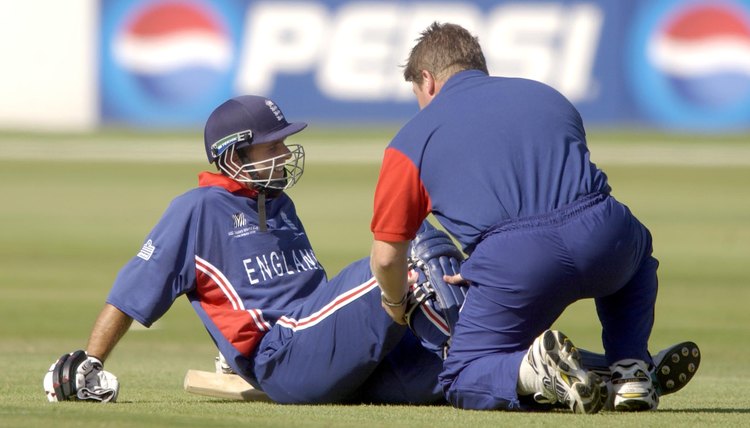How to Strengthen an Atrophied Calf Muscle

Atrophy is a wasting or loss of muscle tissue. The two main kinds of atrophy are disuse atrophy, caused simply by not using your muscles, which usually happens after long periods of inactivity, and neurogenic atrophy, which is more serious. Neurogenic atrophy occurs more quickly than disuse atrophy and is usually a result of an injury or a disease of the nerves around the muscle. Should you develop an atrophied calf muscle, it's vital that you rehabilitate it in the correct way to get it back to full health.
Get clearance from your doctor and physiotherapist to ensure that training won't cause further muscle damage. If your atrophy is of the neurogenic type, then simple toe and heel raises are all you need to begin with. If only one calf is affected, there is an imbalance between the legs, so be careful not to overwork the non-atrophied leg and make the imbalance greater.
Basic Exercises
If you've suffered an injury, your calf muscle won't have been moving much. Start the rehab process by moving your toes up and down. Once you're comfortable with this, progress to putting some of your body weight on the calf and walking a few steps at a time. One of the most common causes of calf-muscle atrophy is an Achilles tendon rupture. According to podiatrist Amol Saxena, calf muscles that have atrophied as a result of an Achilles rupture respond well to eccentric training. Stand with your toes on a box or step and lower your heels toward the floor, keeping the movement slow and controlled. Do three sets of 10 reps of these each day.
Advanced Exercises
As your calf gets stronger, you can gradually introduce tougher, more complex exercises, provided you get the go-ahead from your health practitioners. The Nicholas Institute of Sports Medicine and Athletic Trauma in New York advises that after nine weeks or so, you should be able to introduce light-weighted calf raises on calf machines or the leg press, and after 13 weeks, you can do some simple plyometric exercises, such as bunny hops and single-leg jumps. Be careful with these though -- should you feel any pain or discomfort, cease the exercise immediately and consult your doctor. Do two sessions with these exercises each week for two to three sets of 10 to 20 repetitions.
Walking and Running
Walking and running strengthen the calf muscles and joints and tendons around the muscle tissue. Walking is a good choice of rehab exercise, as it's free, requires no special equipment and can be done anywhere. Start slowly by walking around the block once or twice and gradually build up your distance. Add in light bursts of jogging when you can, before building up to running. You may need to talk to a podiatrist or physical therapist beforehand to check that your training shoes are suitable for walking and running and that you don't need any special inserts to correct your gait.
References
Writer Bio
Mike Samuels started writing for his own fitness website and local publications in 2008. He graduated from Peter Symonds College in the UK with A Levels in law, business and sports science, and is a fully qualified personal trainer, sports massage therapist and corrective exercise specialist with accreditations from Premier Global International.
